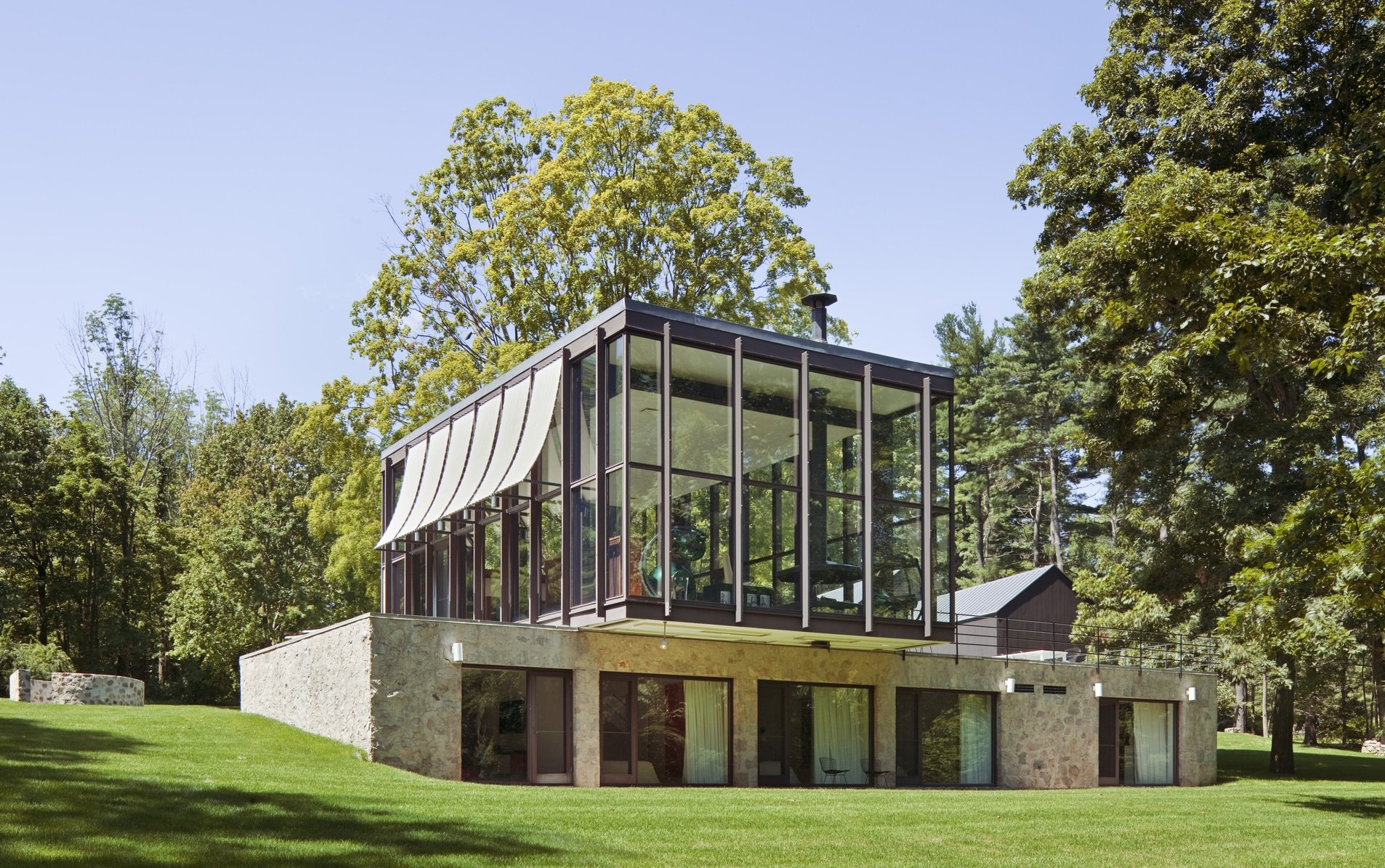#12376. Dual Facade: Stone Base and Glass Pavilion with Curved Roof

This modern house with a contrasting combination of a stone base and glass superstructure represents an expressive example of modernist architecture in a natural context. The first floor is made of natural stone with a horizontal composition and large window openings, creating a connection with the landscape. The upper volume is completely glazed and represents a pavilion with an expressive curved roof that gives the building a dynamic silhouette.
The facade solutions are built on the interplay of materials and textures: the heavy stone base symbolizes a connection to the earth, while the light, almost weightless glass superstructure with a metal frame creates a sense of airiness and openness. The architect masterfully uses the contrast between the massiveness of the lower volume and the transparency of the upper one, which is emphasized by the rhythmic articulation of the vertical posts of the glass facade.
Special attention is drawn to the curved roof of the pavilion, which seems to float above the foundation. This technique not only creates an expressive architectural image but is also functionally justified – such a form effectively deals with precipitation and visually softens the geometry of the building, harmoniously integrating it into the natural environment rich in greenery.
In your own project, a similar approach can be adapted through the use of contrasting materials on the facade, creating a two-part composition, and using large glazed surfaces for visual connection with the surrounding landscape. Playing with the roof form can also become a key element of the architectural expressiveness of a house.